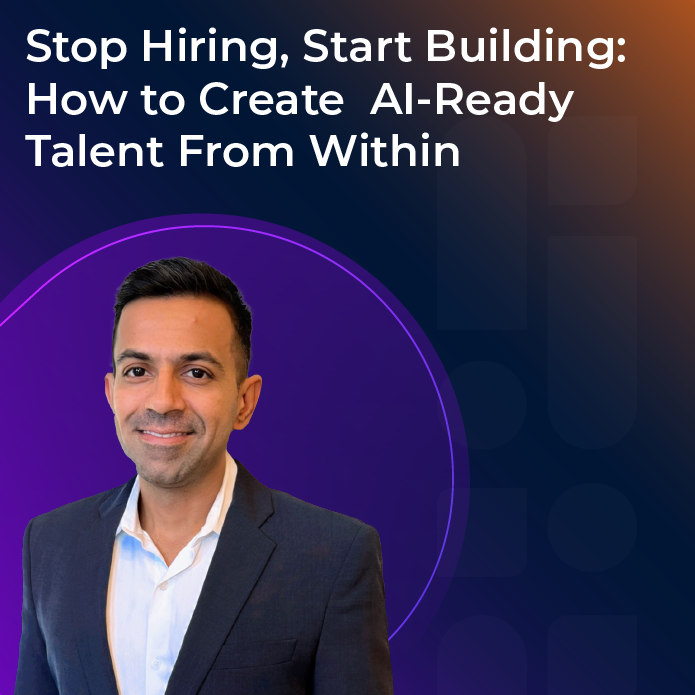Insights

Article
Artificial Intelligence (AI) and Machine Learning (ML) are revolutionizing industries by enhancing customer interactions, driving innovation, and boosting efficiency. This blog explores their impact on banking, healthcare, telecommunications, and retail, showcasing how AI and ML are transforming fraud detection, personalized medicine, network optimization, and the shopping experience. Dive into the future of AI and ML to see how these technologies are shaping a more efficient, personalized, and innovative world.

Unleashing the Power of AI: Transforming Industries and Shaping the Future
Seventy-five percent of the value generated by General AI use cases emerges in Customer Operations, Marketing & Sales, Software Engineering, and Research & Development, showcasing the profound impact of Artificial Intelligence (AI) and Machine Learning (ML) across various sectors. These technologies are revolutionizing industries by enhancing customer interactions, propelling product innovations, and ushering in a new era of efficiency and personalization. As we transition to exploring AI and ML’s practical applications, we’ll see how they’re specifically transforming banking and finance, healthcare, telecommunications, and retail, illustrating the technologies’ dynamic roles and promising future within these key sectors.
Now, let’s delve into how AI and ML are specifically transforming banking, healthcare, telecommunications, and retail, spotlighting their impact and future potential within these industries.
Banking and Finance:
- Fraud Detection and Risk Management: ML algorithms analyze vast amounts of transaction data in real-time, detecting fraudulent activities and enhancing risk management strategies. This not only protects banks from financial losses but also safeguards customer accounts.
- Predictive Analytics for Financial Planning: AI-driven predictive analytics tools help financial institutions analyze market trends, customer behavior, and risk factors to make informed decisions in areas like investment management and lending. This leads to personalized financial products and services for customers.
Healthcare:
- Personalized Medicine: AI and ML algorithms are being leveraged to analyze patient data, including genetic information, to tailor treatment plans and medications for individual patients. This personalized approach to medicine can improve patient outcomes and lead to more effective treatments.
- Medical Imaging and Diagnostics: AI-powered image recognition technologies are improving the accuracy and speed of medical diagnoses, enabling early detection of diseases such as cancer and providing more precise treatment options. This can significantly improve patient care and save lives.
- Drug Discovery and Development: ML algorithms are used to analyze large datasets and identify potential drug candidates, accelerating the drug discovery process and reducing time-to-market for new medications. This holds immense potential for tackling diseases and improving public health.
Telecommunications:
- Network Optimization and Predictive Maintenance: AI and ML are used to optimize network performance, predict equipment failures, and proactively address issues before they impact service quality. This ensures a seamless and reliable user experience for telecom customers.
- Customer Experience Enhancement: Telecom companies utilize AI-powered chatbots and virtual assistants to provide customer support, troubleshoot technical issues, and offer personalized recommendations for services and plans. This enhances customer satisfaction and streamlines support processes.
- Network Security: ML algorithms help detect and prevent cybersecurity threats, including malware, phishing attacks, and network intrusions, safeguarding sensitive customer data and infrastructure. This is crucial in today’s increasingly digital world.
Retail:
- Personalized Shopping Experience: AI-driven recommendation engines analyze customer preferences, purchase history, and browsing behavior to offer personalized product recommendations, enhancing the shopping experience, and increasing sales. This caters to individual customer needs and leads to higher customer satisfaction.
- Inventory Management and Demand Forecasting: ML algorithms optimize inventory levels by analyzing historical sales data, market trends, and external factors to forecast demand accurately and prevent stockouts or overstocking. This optimizes resource allocation and reduces costs for retailers.
- Supply Chain Optimization: AI/ML technologies optimize supply chain operations by predicting demand, identifying potential bottlenecks, and optimizing logistics routes, leading to cost savings and improved efficiency. This ensures a smooth flow of goods and services, benefiting both businesses and consumers.
Looking Forward: A Future Powered by AI/ML
The future outlook for AI/ML across various industries is promising. As these technologies continue to evolve and become more sophisticated, we can expect even greater advancements in areas like automation, personalization, and decision-making. However, it’s crucial to ensure responsible development and deployment of AI, with ethical considerations at the forefront.
The future belongs to those who can harness the power of AI/ML. Whether you’re a business leader, aspiring data scientist, or simply curious about this revolutionary field, there’s no better time to explore the possibilities.
.webp)
.webp)
2026 IT Workforce Prediction: AI-Native, Entry-Level Talent Will Be The Secret Advantage
Explore the full story
2026 IT Workforce Prediction: AI-Native, Entry-Level Talent Will Be The Secret Advantage
Explore the full story
.webp)
.webp)
Empowering the Tech Workforce: Revature’s Strategic Partnership with the Salesforce Trailblazer Workforce Partner Program
Explore the full story
Empowering the Tech Workforce: Revature’s Strategic Partnership with the Salesforce Trailblazer Workforce Partner Program
Explore the full story






.webp)